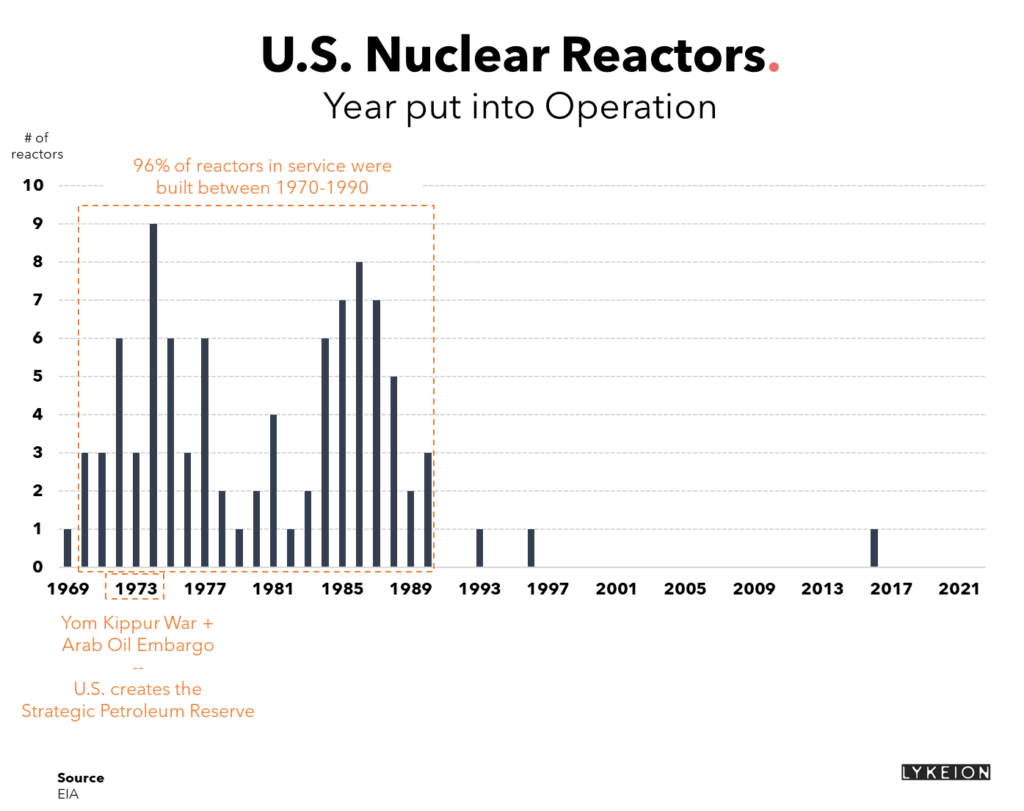14 August 2022 | Climate Tech
Nuclear about-face
By
Today, let’s look at a different deal than our typical VC-funded fare.
About three months ago, I opined that outside of China, at least, nuclear power was missing its moment:
In the U.S., renewable energy sources surpassed nuclear [in terms of electricity generation] for the first time in 2021. In what should be a golden moment for its renaissance, nuclear isn’t bucking that trend right now.
Three months later, sustained and intense pressure on grids worldwide has shifted momentum considerably. So much so that it’s time for me to reevaluate my position, at least modestly:
- Germany may well keep reactors that were set to close this year open longer, hoping to displace some of its dependence on Russian gas. Public sentiment towards nuclear has conveniently shifted in the country as well – funny how demand-driven that can be!
- Japan, another epicenter for fear about nuclear power post-Fukushima, is evaluating boosting its nuclear power use in advance of what’s forecast to be a tight winter in terms of energy supply. It has already restarted reactors that have been idling since 2011.
- India continues to follow China’s lead, at least in terms of ambition. With 12 reactors planned and 8 under construction, it’s poised to post significant gains in nuclear power capacity this decade.
In the U.S., one new nuclear power plant (‘NPP’), Plant Vogtle in Georgia, may finally go live this year after considerable delays and cost overruns. Still, new NPPs have been hard to come by in the U.S. this century:

Now however, there may be enough tailwinds in the U.S., which has seen its share of grid strain this summer, to move the needle for nuclear. A new deal in California may help save an existing power plant, Diablo Canyon.
Diablo Canyon is California’s last operational NPP and also the state’s single largest power source. Scheduled to be closed by 2025, Governor Gavin Newsom is now making a last-ditch effort for the year to extend the plant’s operational life to 2035. This after he previously opposed keeping the plant open longer. The deal would include a $1.
While headlines may reflect staunchly divided groups in favor and against the plant’s continued operation? The majority of local residents in San Luis Obispo County, those with arguably the most right to concern themselves with its nuclear waste or similar, support it.
The deal hasn’t gone through yet – it will still need to make its way through California’s legislature. And it would have to do so by August 31st, the end of the legislative session. If it becomes law, it might not be the only lifeline for Diablo Canyon, as the Biden admin has also earmarked $6B in federal funds to save operational power plants. It’s unclear whether Diablo Canyon will be eligible for those funds, however.
The net-net
Regardless of where you land on the nuclear power debate, it’s worth noting how the conversation surrounding nuclear power has shifted across the world this year and even over the past three months. Sure, it’s largely pragmatic; in places like California and Germany, it’s more based on need than desire. Still, the conversation, let alone action to keep reactors open longer, didn’t exist at all a year or two ago.
The dream of a 100% renewable energy mix is still kicking. Still, practically speaking, sources of firm power, whether supplied by nuclear power, natural gas, or something else, will be critical for many intervening decades. Even if only as back-up in cases of extreme demand.